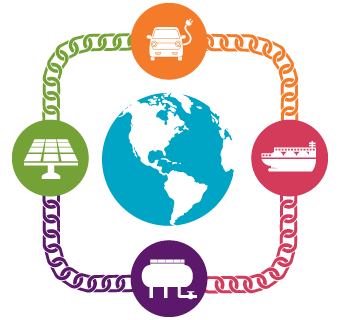By William M. Keyser and Toks A. Arowojolu
On April 18, 2019, the Federal Energy Regulatory Commission (“FERC”) issued an order granting a petition for declaratory order filed by Sunrun, Inc. (“Sunrun”) that exempted Sunrun, the nation’s largest residential solar company, from certain qualifying facility (“QF”) filing requirements under the Federal Power Act (“FPA”) and the Public Utilities Holding Company Act (“PUHCA”). The requested waiver would allow Sunrun to avoid significant administrative and regulatory burdens by avoiding potentially hundreds of QF filings as it increases the number of photovoltaic (“PV”) systems it owns on behalf of its customers.
QFs have the right to sell energy or capacity to a utility at an avoided cost rate and receive relief from certain regulatory burdens. To qualify as a QF, eligible facilities (including solar facilities) with power production capacity of greater than 1 MW (1000 kW) must certify their status with the Commission by either submitting a Form 556 self-certification or filing an application. Facilities with net power production of 1 MW or less are exempt from this filing requirement. When determining the size of a QF, FERC applies a “one-mile rule.” Under the “one-mile” rule, QFs located within a mile of another facility that use the same energy source and have the same owner are considered one QF for purposes of determining whether the QF surpasses the 80MW requirement for QF eligibility. FERC also applies the one-mile rule to determine whether a QF is 1 MW or less and therefore exempt from the QF certification filing requirement.
The one-mile rule carries potential consequences for developers of small and distributed rooftop solar systems like Sunrun, particularly when they retain ownership over the individual systems. According to the petition, Sunrun’s customers can choose to have Sunrun finance the PV system with Sunrun initially retaining ownership and continuing to monitor, maintain, and insure the system. Under Sunrun’s system, the homeowner is granted an option to buy the PV system later.
Sunrun filed its petition in September 2018 requesting waivers of two QF certification requirements to support its business model of selling, owning, and maintaining residential solar PV systems. First, Sunrun requested a waiver of the QF certification filing requirement for separately interconnected, individual residential rooftop solar PV systems with a maximum net power production of 20 kw or less that Sunrun provides financing for but which the homeowner has an option to purchase. Because Sunrun could conceivably finance or own many such 20 kW systems within one-mile radius, it would be possible for all such 20 kW systems to aggregate to over 1 MW and trigger QF certification filing requirement. Second, Sunrun also requested that, in a self-certification submitted for a cluster of rooftop PV systems that exceed 20 kW, FERC waive the requirement to include information for the facilities covered by the first waiver request (i.e., 20 kW or less).
Sunrun explained to FERC that its concerns were two fold: (1) while 99.5% of the residential PV systems that Sunrun owns have a nameplate capacity below 20kW, PV systems within close proximity to one another can collectively be deemed to be one QF under the one-mile rule, and (2) without the waivers, Sunrun would have to “monitor the geographic concentration of its PV systems” and file and continuously update a highly burdensome number of filings. With Sunrun’s 202,000 PV systems spread across 22 states, numerous applications would be expected.
FERC granted the requested waivers, finding that Sunrun’s request aligned with the purpose of the 1MW exemption which is “to ease the administrative burden for both the Commission and small scale QFs.” FERC also directed Sunrun to maintain sufficient records of the residential PV portfolio that it owns through “third-party financing arrangements” to ensure that its aggregated solar resources are in compliance with other federal regulations. FERC’s ruling could provide an opportunity for Sunrun and other rooftop solar aggregators to sell solar power into the wholesale markets. However, despite the easing of the administrative and regulatory burden at FERC, solar aggregators are still subject to a host of interconnection and state regulatory requirements that would also need to be addressed. We will continue to monitor the developments of this proceeding and its impacts on the solar PV and wholesale markets.


